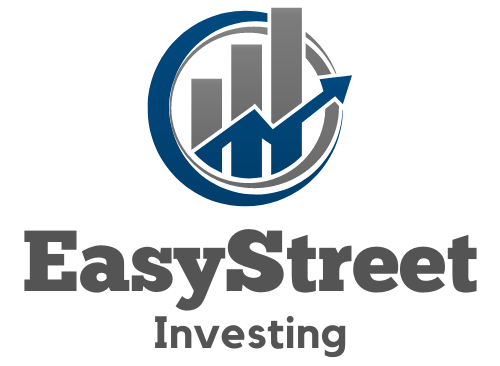Navigating the world of investments can be as thrilling as it is complex, especially when it comes to high-yield bond funds. These vehicles offer the allure of enhanced returns, but they come with a side serving of increased risk. In this deep dive, we’ll peel back the layers of high-yield bonds, giving you the lowdown on how they work and what they could mean for your portfolio.
Expect to gain insights into the mechanics behind these funds, from interest rate movements to credit risk assessments. We’ll explore strategies for potential rewards while keeping an eye on the risks that could throw investors off course. So whether you’re a seasoned investor or just dipping your toes into the financial waters, get ready for a straightforward guide that could help steer your decisions in the high-stakes game of high-yield investing.
Important Highlights
1. High-yield bond funds offer investors the chance to earn higher returns compared to investment-grade bonds, primarily because they involve companies with lower credit ratings, which are seen as riskier investments. These funds focus on corporate bonds that pay higher interest rates due to the increased likelihood of default by the issuing company.
2. A key aspect of investing in high-yield bonds is the need for thorough credit risk assessment. Investors should meticulously analyze the financial health and future prospects of these companies to ensure that the potential rewards justify the risks involved. This involves looking at debt-to-equity ratios, interest coverage ratios, and other indicators of financial stability.
3. Market conditions significantly influence high-yield bond fund performance; during periods of economic growth, default rates typically decrease and high-yield bonds can perform particularly well. Conversely, during recessions, default rates can increase sharply, leading to significant losses for unwary investors who may not have adequately considered the cyclical nature of these securities.
4. Diversification within a portfolio can be improved through the inclusion of high-yield bond funds since their returns often do not move in tandem with those of more conservative bonds or equities. Nonetheless, it’s critical for investors to recognize that diversification does not entirely eliminate risk but spreads it across various assets to mitigate potential losses from any single investment.
5. The fees and expenses associated with high-yield bond funds are an important consideration; these can eat into profits and reduce overall returns. Investors should compare fund expense ratios and consider whether active management fees are justified by the performance of the fund over time relative to its benchmark index or similar passive investment strategies.
Frequently Asked Questions
What are High-Yield Bond Funds?
High-yield bond funds invest in corporate bonds with lower credit ratings that offer higher interest rates. They’re also known as “junk” bonds and can potentially provide greater returns compared to investment-grade bonds, albeit with higher risks.
How do High-Yield Bond Funds perform during economic downturns?
During economic downturns, high-yield bond funds may face more challenges as the risk of default increases for companies with lower creditworthiness. This could lead to volatility and potential losses for investors.
Are High-Yield Bond Funds a good addition to my portfolio?
Incorporating high-yield bond funds into your portfolio can offer diversification and the potential for higher income. However, it’s important to weigh the risks and consider your overall investment strategy and tolerance for risk.
What is the interest rate risk associated with these funds?
Interest rate risk refers to the potential decline in bond prices when interest rates rise. Since high-yield bonds have higher interest rates, they may be less sensitive to changes in market rates than other types of bonds but still carry some level of risk.
How do I assess the quality of a High-Yield Bond Fund?
To evaluate a fund’s quality, analyze its credit ratings distribution, performance history, portfolio diversity, and management team’s expertise. These factors can give you insights into the fund’s potential risks and returns.
Can High-Yield Bond Funds generate steady income?
Yes, due to their higher interest payments, these funds can provide steady income. However, this comes with increased exposure to credit risk, which necessitates careful selection and monitoring.
What impact does inflation have on High-Yield Bond Funds?
Inflation can erode the purchasing power of fixed-income investments like high-yield bonds. However, since these bonds offer higher yields, they might help mitigate inflationary impacts better than lower-yielding securities.
How important is duration in assessing these funds?
The duration measures a bond’s sensitivity to interest rate changes. Understanding duration is crucial as it helps investors gauge how much a fund’s price could change with market fluctuations.
Should I consider global or domestic High-Yield Bond Funds?
Your choice should align with your investment goals and comfort with foreign market exposure. Global funds can offer more diversification, while domestic funds might align better with familiarity with local markets.
What fees should I expect when investing in these funds?
Fees can include management fees, transaction costs, and potential load fees. It’s vital to understand all associated costs as they directly affect your net return on investment.
Closing Thoughts on Evaluating Junk Bonds’ Potential
Evaluating high-yield bond funds requires balancing the quest for robust returns against understanding and managing inherent risks. Given their complex nature, investors should thoroughly research or consult financial advisors before adding them to their portfolios. The allure of high income has to be weighed carefully against the backdrop of economic cycles and individual risk profiles.
In conclusion, while high-yield bond funds hold promise for significant returns during periods of stable or improving economic conditions, it is imperative to remain vigilant about changing market dynamics that could impact their performance. Thoughtful consideration and regular reassessment of these investments are key steps towards achieving long-term financial goals.

